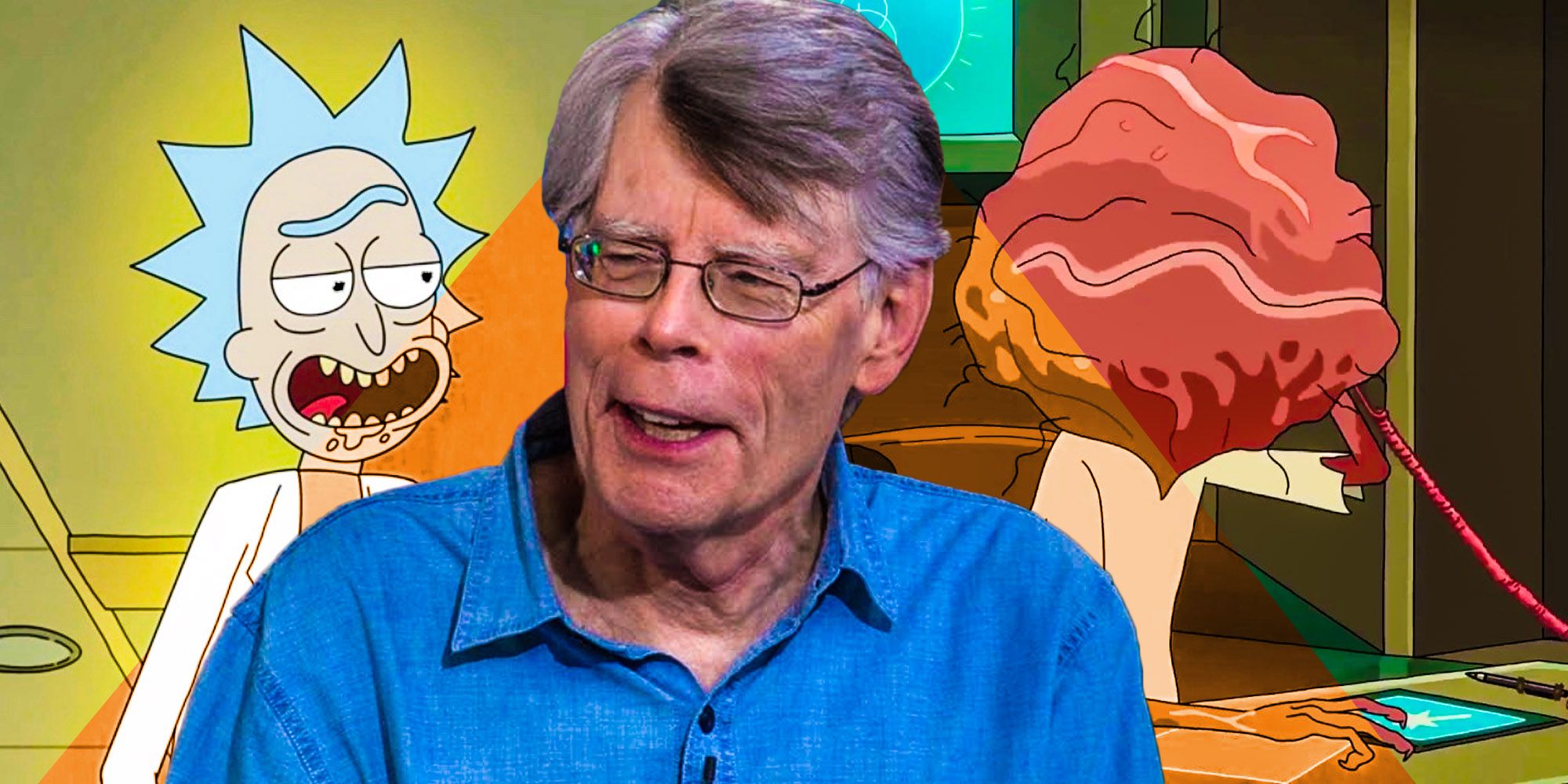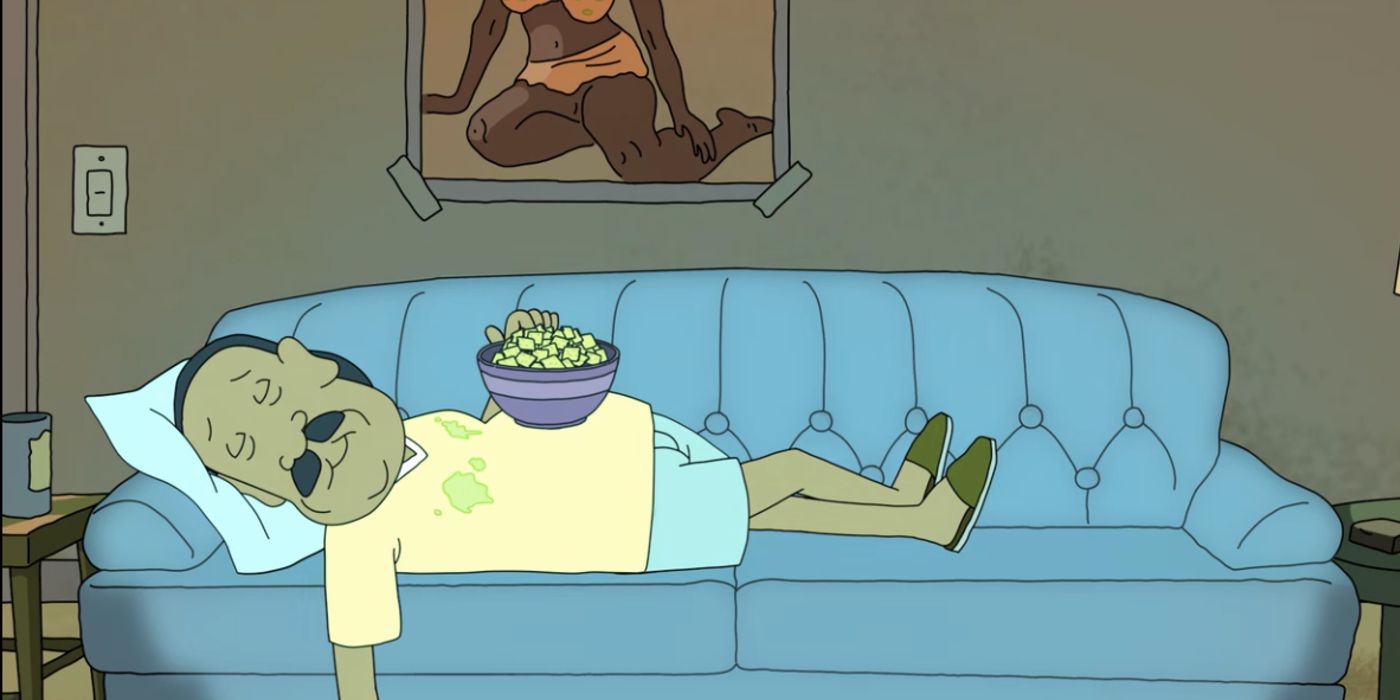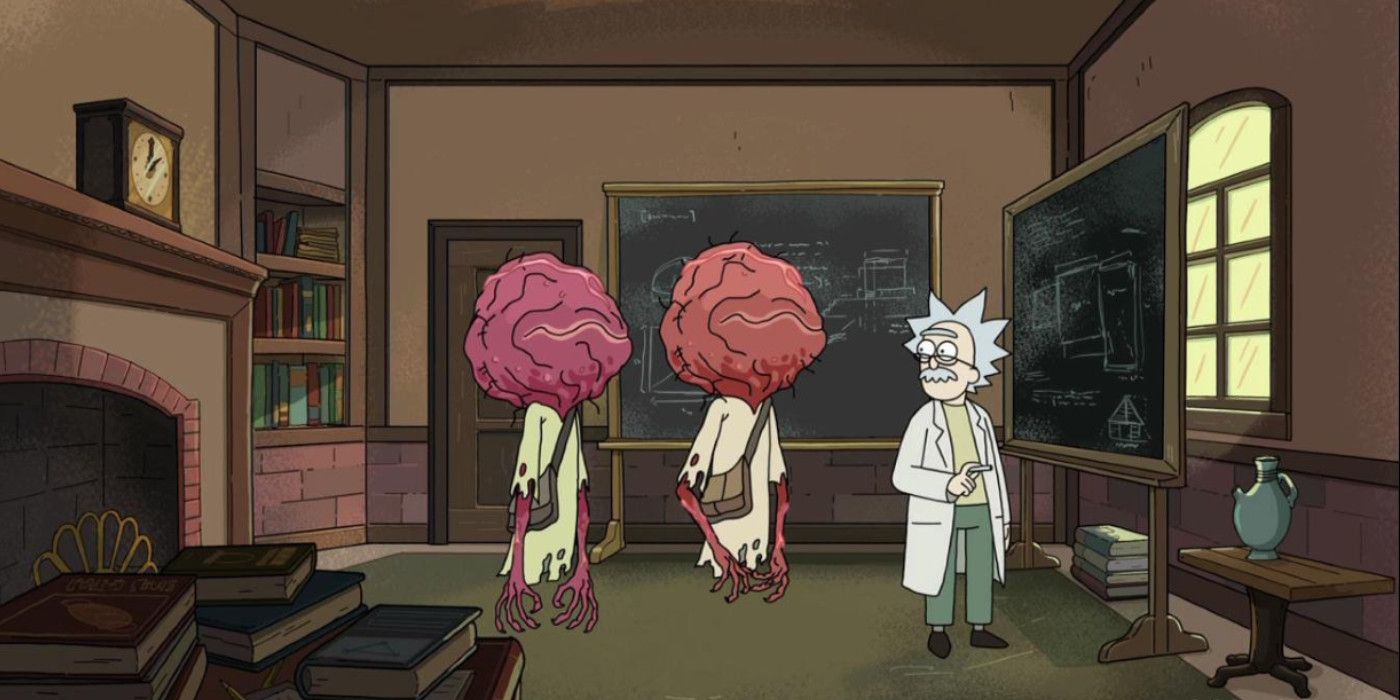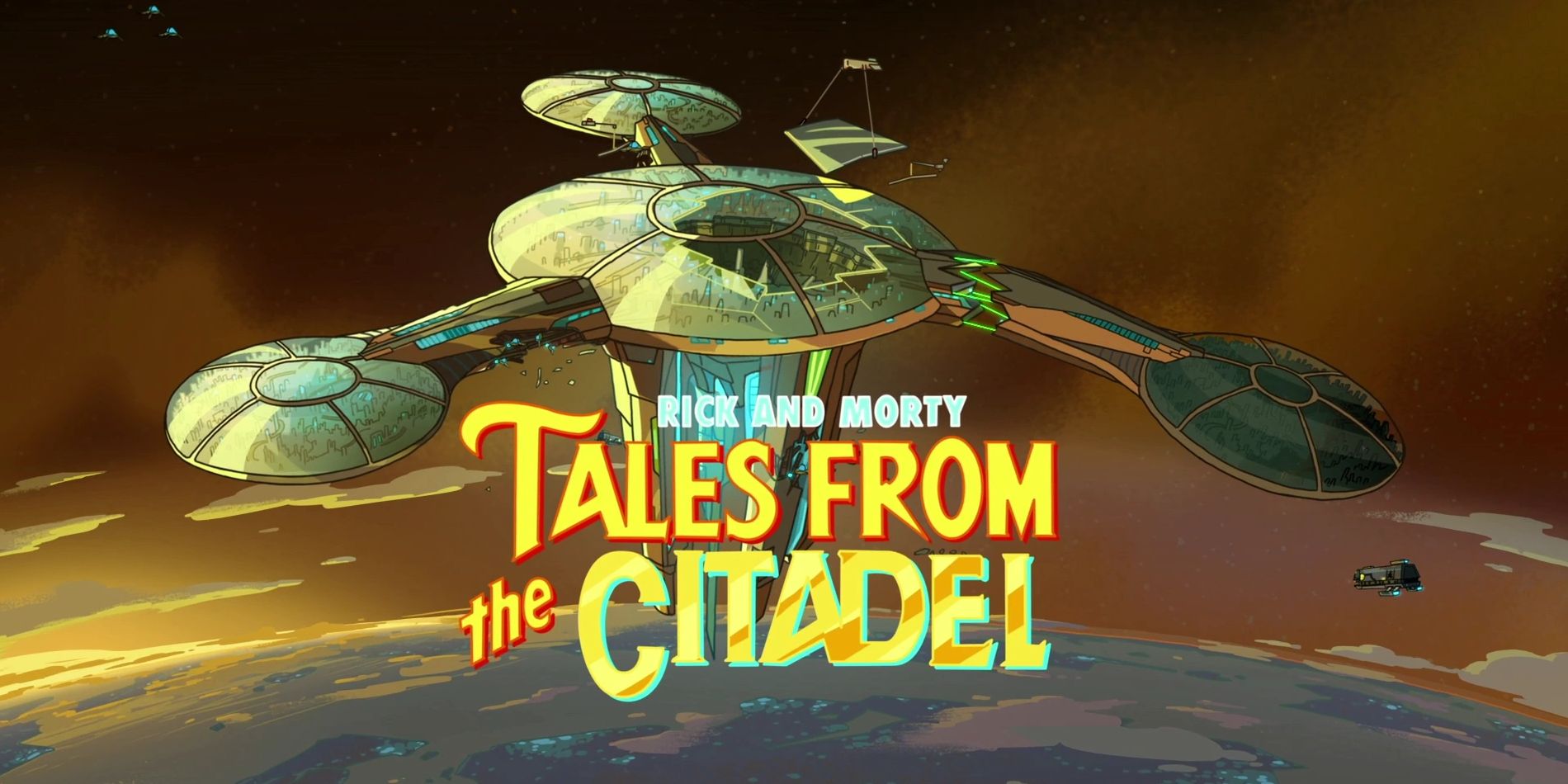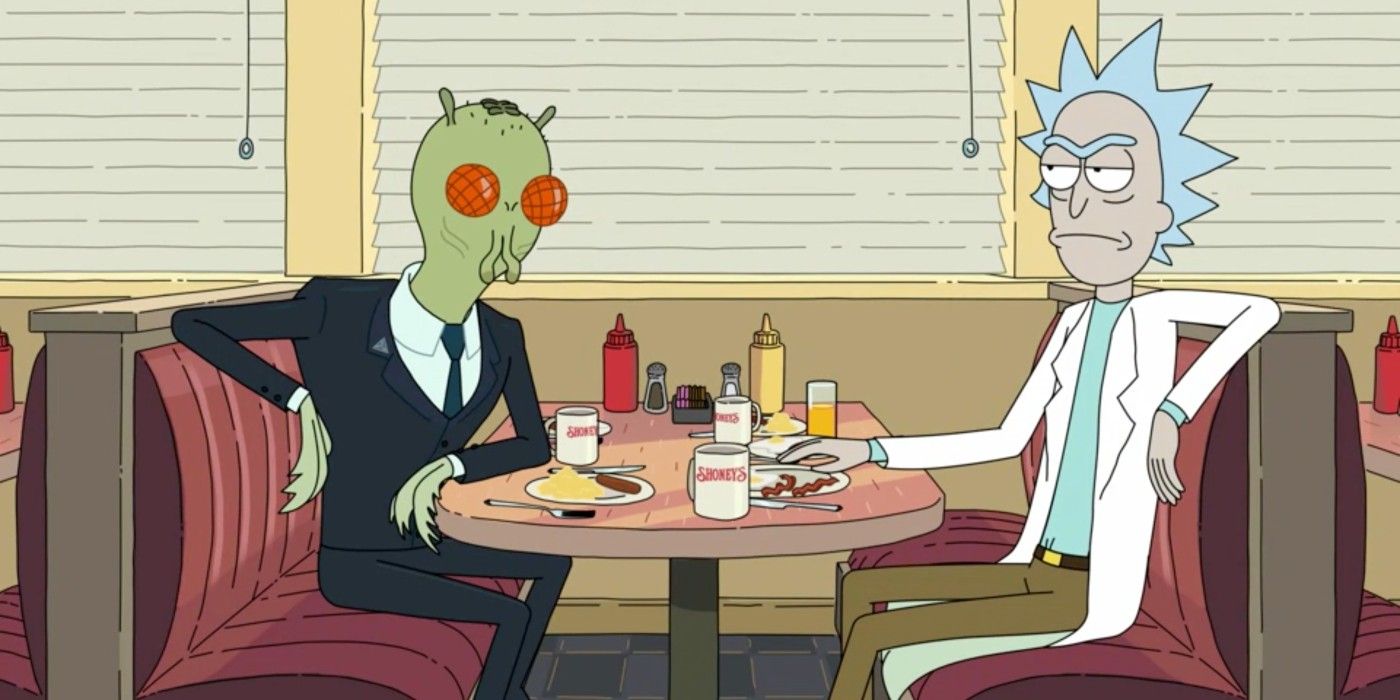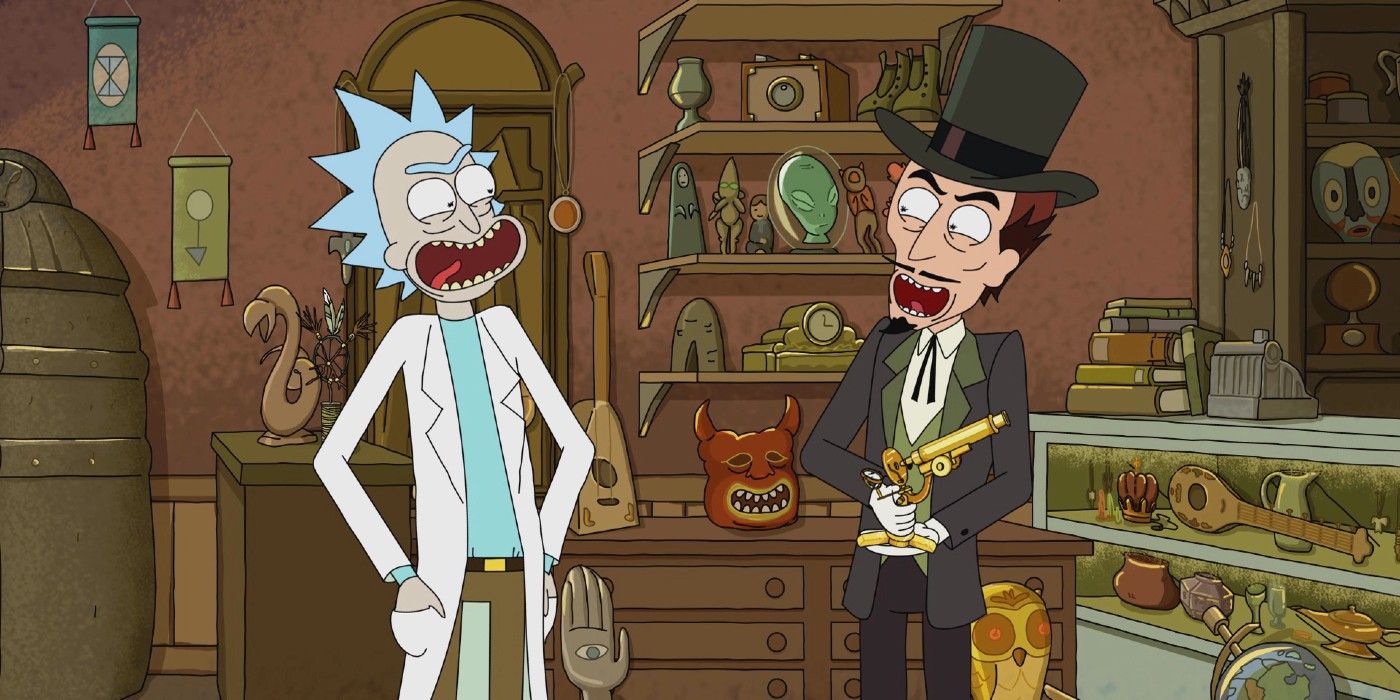Adult Swim hit Rick & Morty has spoofed almost every legendary piece of genre fare over the years, but when has the show referenced the works of iconic horror author Stephen King? Debuting in 2013, Rick & Morty is an anarchic adult animated comedy series co-created by star Justin Rolland and Community’s Dan Harmon. A subversion of family sitcoms and sci-fi adventure serials, Rick & Morty evolved from inauspicious origins as a raunchy digital short spoofing Back to the Future.
In the years since these humble beginnings, Rick & Morty has earned both critical acclaim and a massive fan base. However, the show has never stopped spoofing all manner of genre fare despite its growing profile. In the most recent season alone, Rick & Morty parodied everything from Game of Thrones and its obsessive fan base to Ridley Scott’s Alien prequel Prometheus.
One cultural figure whose work has been spoofed endless times on Rick & Morty is The Shining scribe, Stephen King. This may seem surprising, as Rick & Morty’s setup of a scientific super-genius and his dim-witted grandson shares more creative DNA with sci-fi TV than horror literature. However, although Rick & Morty is mainly interested in parodying sci-fi tropes, the show has also regularly taken swipes at horror media. This trend looks set to continue with the fifth season, whose trailer features a nod to kaiju movies and Clive Barker’s cult 80s horror Hellraiser. As a result, Rick & Morty spends almost as much of its screen time spoofing horror as it does sci-fi, as proven by the show’s many nods to the works of prolific Lisey's Story author Stephen King, particularly in its earlier seasons.
The Shining
The earliest and most obscure of Rick & Morty’s many nods to King comes in the show’s second episode “Lawnmower Dog” (season 1, episode 2). Most of this outing is devoted to spoofing both Christopher Nolan’s dream heist thriller Inception and Wes Craven’s seminal slasher A Nightmare On Elm Street. However, there’s an easy-to-miss nod to Stanley Kubrick’s acclaimed adaptation of King’s haunted hotel novel The Shining early on in the outing’s action. The pin-up poster above Morty’s sleeping Principal resembles the one above a sleeping Dick Halloran in the movie adaptation of The Shining, although Halloran has the comfort of a bed where Morty’s principal is passed out on the couch. It’s easier to miss than the same episode’s Freddy Krueger parody Scary Terry, but the nod is still Rick & Morty’s first reference to the works of the horror icon.
The Langoliers
Rick & Morty rarely settles for an obvious nod when there is a more obscure option available, as proven by the season 2 debut “A Rickle In Time” (season 2, episode 1). The episode’s villains, Time Cops voiced by comedy duo Key and Peele, don’t look like toothy testicles for no reason — they’re a riff on the eponymous villains of The Langoliers, a largely forgotten King story and subsequent miniseries from the 90s, who served the same antagonistic purpose. King's Langoliers were unthinking, insatiable beings that ate up the past (and unfortunate figures who were stuck in it, like Bronson Pinchot) with their fangs. In contrast, Rick & Morty’s versions of the Langoliers are bureaucratic pencil pushers out to ruin Rick’s good time solely because his antics threaten to rip open a hole in the space-time continuum. That said, their appearance and function are unmistakably a reference to King’s eponymous monsters, even if Key and Peele’s versions of the Langoliers are more talkative.
Stand By Me
1986’s Stand By Me is a poignant coming-of-age drama that proved, once again, that King could do more than horror. Based on Different Seasons’ “The Body”, the moving story saw a quartet of young boys embarking on an adventure to find a body they heard was spotted miles from their smalltown home and bonding along the way. One of the subplots in season 3’s “Tales From the Citadel” (season 3, episode 7) introduces a group of wayward schoolboy Mortys who are clearly modeled on the young heroes seen in this ‘80s classic, adapted from King’s short story. Except, of course, for Lizard Morty, who was modeled on his reptile namesake.
The Rickshank Redemption
The title of season 3’s debut episode "The Rickshank Redemption" (season 3, episode 1) is a nod to the Stephen King novella "Rita Hayworth and the Shawshank Redemption" and its iconic 1994 adaptation, starring Tim Robbins and Morgan Freeman. However, the connection goes deeper than just a titular reference. The breakout climax is also a nod to the famous film’s optimistic twist, with both the King adaptation and the Rick & Morty outing ending on their heroes escaping prison through a convoluted, ingenious route. Andy Dufresne was escaping a pretty standard American prison (and bringing the corrupt warden to justice in the process), whereas Morty’s grandfather is a political prisoner held hostage by Rick's worst enemy the Federation, but otherwise, the triumphant ending of the two stories is clearly comparable.
Needful Things/Pet Sematary
Rick & Morty’s first season featured most of the show’s clearest nods to King, but sometimes the ambitious meta-comedy managed to nestle one reference inside another. “Something Ricked This Way Comes” (season 1, episode 9) lifts its basic premise of a mysterious store that offers patrons whatever their heart desires at a karmic cost from the Stephen King novel Needful Things. Sure, Rick & Morty’s version of events sees Rick immediately realize the store’s owner is Satan, only for Summer to stick around regardless since she likes working in the shop, but the comparison is not hidden and fans would find it hard to miss the outing’s creative debt to King. However, what not every viewer noticed was the episode’s more subtle nod to another of King’s stories, the recently-remade Pet Sematary. When one patron arrives at the store, he tells Rick “I’m here to pick up my undead cat and child”— a very blasé retelling of Pet Sematary’s similar “be careful what you wish for” plot. This being Rick & Morty, the patron doesn’t seem fazed by his predicament where the troubled antihero of Stephen King’s classic novel is tormented by his undead child, but the moment is still a pretty clear, and funny, nod to Pet Sematary.

